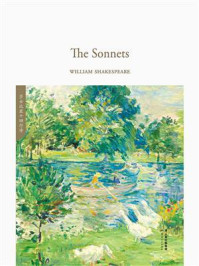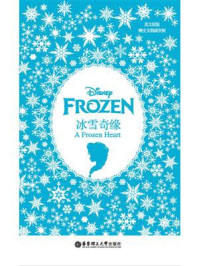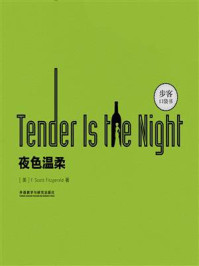





The common cold is a commonly-encountered exogenous disease during the infancy,mainly caused by exogenous pathogenic factors and clinically characterized by fever,aversion to cold,nasal obstruction,running nose,sneezing,cough,headache and muscular stiffness.It is more prevalent in winter and spring and during periods of sudden weather changes.As the most commonly seen pediatric condition,the common cold can affect children of any age,most commonly seen in infants and young children.The disorder is often complicated with patterns of the phlegm and food retention,or even with fright or convulsions,as child’s lung is especially delicate,with the spleen often insufficient and the spirit relatively weak.Western medicine divides it into cold common cold and influenza which is equivalent to the shí xíng găn mào (时行感冒) in Chinese medicine.
The common cold mainly results from pathogenic wind invasion and is also often associated with pathogenic cold,heat,summer heat,dampness,and dryness.The main location of the common cold is the lung,but it sometimes affects the liver and the spleen.The key pathomechanism involves lung wei qi failure to diffuse.
The common cold occurs mostly because of weather changes,extremely hot or cold days,improper care,or when bathing in a cold environment.The lung controls the skin and hair,governs the interstitial spaces and opens to the nose.The exterior pathogens,attacking the lung through the mouth and nose or the skin and hair,lead to exterior wei qi failing to regulate, wei -yang restrained and lung qi failing to diffuse.Signs and symptoms will include fever,aversion to cold,nasal congestion and discharge,sneezing and cough.Wind is the chief pathogen of all diseases and often attacks the body complicated with other pathogens such as cold,heat,summer heat,and dampness,causing wind-heat syndrome,wind-cold syndrome or summer damp syndrome.Common cold with phlegm:When the pathogen attacks the lung,the lung qi fails to disperse and descend,disturbing qi movement and impairing the fluid distribution.This results in the fluids staying in the lung collaterals and transforming into phlegm which blocks the respiratory tract,causing coughing more serious.Common cold with stasis: The spleen in infants is often insufficient.When it is attacked by pathogens,the spleen fails to transform and transport,which leads to food stagnation in the middle jiao ,epigastric and abdominal distention and fullness and poor appetite,or vomiting and diarrhea.Common cold with convulsions: when the pathogen attacks,heat disturbs the heart and liver because children often have a timid and weak spirit,and the heart and liver qi are excessive,which leads to the restlessness of the heart-spirit,disturbed sleep,susceptibility to fright,even convulsions.
a.History Common cold may occur at any time in a year,especially in the winter and spring.It often results from sudden changes of climate,exposure to extremely cold and hot environments,contact with individuals with common cold,or history of external pathogens.
b.Manifestations Fever,aversion to wind and cold,nasal congestion and discharge,sneezing,mostly accompanied by cough,vomiting and diarrhea,sometimes high fever and convulsions.
c.Auxiliary examination Blood routine examination: The total white blood cell in children with viral infections is normal or lower,and the number of leukocytes and neutrophils is higher in children with bacterial infection.Etiological examination is performed if necessary.
a.Early stages of acute infectious diseases Early stages of many acute infectious diseases have symptoms similar to common cold,such as measles,pertussis,chickenpox,exanthema subitum,epidemic cerebrospinal meningitis,which should be identified according to the epidemiological history,clinical features,laboratory data,clinical manifestations and evolution.
b.Acute infectious laryngitis At the beginning,the disease only shows fever and slightly cough; when the child is crying,hoarse voice may be heard; in serious cases,barking cough and inspiratory stridor may be heard.
a.Differentiating pathogens It is carried out according to seasons,epidemic features,systemic and local signs and symptoms.A common cold is usually caused by wind-cold or wind-heat in winter and spring.A common cold due to wind-cold is indicated by an aversion to cold,clear nasal discharge,and no redness in the tongue and the throat; a common cold due to wind-heat is indicated by turbid nasal discharge and a red tongue and throat.In summer,the common cold is often caused by pathogenic summer-heat.If the summer heat is preponderant,manifestations are high fever with no sweating or slight sweating,thirst,and restlessness; if summer dampness is preponderant,manifestations are epigastric fullness,nausea,a heavy body with fatigue,poor appetite and a greasy tongue coating.In later winter and early spring,the common cold is epidemic,marked by high fever,headache,pain in limbs and other systemic symptoms,which mostly are cold of the seasonal pathogen.
b.Identifying accompanied signs and symptoms It is carried out according to differentiation of signs and symptoms.Common cold accompanied with phlegm is indicated by worsening coughing and phlegm rale in the throat; common cold with food retention by anorexia,abdominal distension,fetid breath,sour and foul stools,thick and greasy coating; common cold with convulsions by fright,shouting and crying,disturbed sleep,and even convulsions.
The basic principles for treating common cold are to disperse wind and release the exterior.The different patterns are treated by releasing the exterior with acrid-warm herbs,releasing the exterior with acrid-cool herbs,clearing summer heat and releasing the exterior,and clearing the heat and removing toxins.In addition to releasing the exterior,dissolving phlegm,promoting digestion and relieving convulsions are used to address the accompanying patterns of the common cold.In order to preserve the immature yin and yang in children and prevent them from having overconsumption of body fluids,it is important to avoid overusing the sweating method.
In children,cold type common cold is prone to transforming into heat type or blocked heat,forming the syndrome of exterior cold with interior heat.In such cases,medicinal herbs with acrid-cool and acridwarm nature are often used together because acrid-cool medicinal herbs alone cannot induce sufficient sweating,whereas acridwarm herbs alone promote heat into the fire.For children with weak constitutions,the principle of releasing the exterior by strengthening the healthy qi is the appropriate method.Apart from oral decoctions,medicat-ed bath,acupuncture and moxibustion can also be applied in treatment.
Principal Syndrome
◆ Wind-Cold Common Cold
Signs and Symptoms: fever,aversion to cold,no sweating,headache,nasal congestion,thin nasal discharge,sneezing,cough,expectoration of thin sputum,pale complexion,body pain,no thirst,no red throat without pain and swelling,pale tongue,thin and white coating,tight and floating pulse,or red finger venules.
Essentials: aversion to cold,thin nasal discharge,no red throat,pale tongue,tight and floating pulse,or red finger venules.
Treatment Principles: Release the exterior with acrid-warm medicinals.
Formula: Modified Jīng Fáng Bài Dú Săn (Schizonepeta and Saposhnikovia Toxin-Resolving Powder,荆防败毒散) from Numerous Miraculous Prescriptions for Health Cultivation ( Shè Shēng Zhòng Miào Fāng ,摄生众妙方).
Medicinals: jīng jiè (Herba Schizonepetae), fáng fēng (Radix Saposhnikoviae), qiāng huó (Rhizoma et Radix Notopterygii), zǐ sū zǐ (Fructus Perillae), qián hú (Radix Peucedani), cōng bái (Bulbus Allii Fistulosi),and dàn dòu chǐ (Semen Sojae Praeparatum).
Modifications: For severe aversion to cold without sweating,add guì zhī (Ramulus Cinnamomi) and má huáng (Herba Ephedrae); for deep and harsh sounding cough,add bái qián (Cynanchi Stauntonii Rhizoma et Radix) and zǐ wăn (Radix et Rhizoma Asteris); for phlegm,add bàn xià (Rhizoma Pinelliae) and chén pí (Pericarpium Citri Reticulatae).
◆ Wind-Heat Common Cold
Signs and Symptoms: severe fever,aversion to wind,sweating or slightly sweating,nasal congestion,turbid nasal discharge,sneezing,cough with yellow or white sticky sputum,red complexion,red and swollen painful throat,dry mouth and thirsty,headache,deep-colored urine,red tongue,thin yellow coating,floating and rapid pulse,or purple finger venules.
Essentials: severe fever,turbid nasal discharge,red throat,red tongue,thin yellow coating,floating and rapid pulse,or purple finger venules.
Treatment Principles: Release the exterior with acrid-cool medicinals.
Formula: Modified Yín Qiào Săn (Lonicera and Forsythia Powder,银翘散) from Systematic Differentiation of Warm Diseases ( Wēn Bìng Tiáo Biàn ,温病条辨).
Medicinals: jīn yín huā (Lonicerae Japonicae Flos), lián qiáo (Fructus Forsythiae), dà qīng yè (Isatidis Folium), bò he (Menthae Herba), jié gěng (Radix Platycodonis), niú bàng zǐ (Fructus Arctii), jīng jiè (Schizonepetae Herba), dàn dòu chǐ (Sojae Semen Praeparatum), lú gēn (Rhizoma Phragmitis),and zhú yè (Herba Lophatheri).
Modifications: For high fever,add zhī zǐ (Fructus Gardeniae) and huáng qín (Radix Scutellariae); for red swollen and painful throat,add chán tuì (Periostracum Cicadae), pú gōng yīng (Herba Taraxaci) and xuán shēn (Radix Scrophulariae); for constipation,add zhǐ shí (Fructus Aurantii Immaturus) and dà huáng (Radix et Rhizoma Rhei).
◆ Summerheat Common Cold
Signs and Symptoms: onset in summer,fever,no sweating or unrelieved fever after sweating,dizziness and headache,nasal congestion,sneezing,heavy body,fatigue,red complexion,swollen and painful throat,stuffiness in the chest,nausea,thirst for drinking or dry mouth without desire for drinking,poor appetite,or vomiting,diarrhea,scanty yellow urine,red tongue,yellow greasy coating,rapid pulse,or purple finger venules.
Essentials: onset to summer,fever,headache,heavy body,fatigue,red tongue,and yellow greasy coating.
Treatment Principles: Clear summerheat and release the exterior.
Formula: Modified Xīn Jiā Xiāng Rú Yǐn (Newly-Supplemented Mosla Beverage,新加香薷饮) from Systematic Differentiation of Warm Diseases ( Wēn Bìng Tiáo Biàn ,温病条辨).
Medicinals: xiāng rú (Herba Moslae), jīn yín huā (Flos Lonicerae Japonicae), lián qiáo (Fructus Forsythiae), hòu pò (Cortex Magnoliae Officinalis) and biăn dòu (Semen Lablab Album).
Modifications: For severe fever,add huáng lián (Rhizoma Coptidis) and zhī zǐ (Fructus Gardeniae); for damp preponderance type,add pèi lán (Herba Eupatorii) and huò xiāng (Herba Agastachis); for vomiting,add bàn xià (Rhizoma Pinelliae) and zhú rú (Caulis Bambusae in Taenia).
◆ Common Cold due to Seasonal Epidemic Pathogens
Signs and Symptoms: sudden onset,severe general symptoms,high fever,aversion to cold,no sweating or fever that is not relieved after sweating,headache,dizziness,red eyes and throat,aching pain in the muscles,abdominal pain and distension,or nausea,vomiting,red or purple-red tongue,yellow coating,rapid pulse,or purple finger venules.
Essentials: high fever,no sweating or fever that is not relieved after sweating,red eyes and throat,aching pain in the muscles,red tongue,and yellow coating.
Treatment Principles: Clear heat and resolve toxins.
Formula: Modified Qīng Wēn Bài Dú Yin (Epidemic-Clearing Toxin-Resolving Beverage,清瘟败毒饮) from Achievements Regarding Epidemic Rashes ( Yì Zhěn Yī Dé ,疫疹一得).
Medicinals: jīn yín huā (Flos Lonicerae Japonicae), lián qiáo (Fructus Forsythiae), shēng shí gāo (Gypsum Fibrosum), shēng dì huáng (Radix Rehmanniae Recens), huáng lián (Rhizoma Coptidis), shuǐ niú jiăo (Cornu Bubali), zhī zǐ (Fructus Gardeniae), huáng qín (Radix Scutellariae), zhī mǔ (Rhizoma Anemarrhenae), chì sháo (Radix Paeoniae Rubra), xuán shēn (Radix Scrophulariae),and mǔ dān pí (Cortex Moutan).
Modifications: For high fever,add líng yáng jiăo fěn (Cornu Saigae Tataricae Powder);for severe aching pain in the muscles,add chái hú (Radix Bupleuri) and gé gēn (Radix Puerariae Lobatae); for nausea and vomiting,add zhú rú (Caulis Bambusae in Taenia) and huò xiāng (Herba Agastachis).
Accompanied Syndrome
◆ Phlegm
Signs and symptoms: a severe cough,copious phlegm,phlegm rale in the throat,red tongue with a thin and yellow coating,rapid pulse or purple finger venules,in addition to the symptoms of common cold.
Essentials: more severe cough,copious phlegm,and phlegm rake in the throat.
Treatment Principles: Relieve a cough and reduce phlegm.
Medicinals: For wind-cold accompanied by phlegm,add má huáng (Herba Ephedrae), xìng rén (Semen Armeniacae Amarum), bàn xià (Rhizoma Pinelliae),and chén pí (Pericarpium Citri Reticulatae); for wind-heat accompanied by phlegm,add sāng yè (Folium Mori), jú huā (Flos Chrysanthemi), guā lóu pí (Pericarpium Trichosanthis),and zhè bèi mǔ (Bulbus Fritillariae Thunbergii).
◆ Food Retention
Signs and Symptoms: abdominal distention,poor appetite,nausea,vomiting of acid and undigested food,bad breath,fetid stools,or abdominal pain with diarrhea,or constipation,scanty yellow urine,thick greasy coating,and slippery pulse,in addition to the symptoms of common cold.
Essentials: abdominal distention,poor appetite,irregular bowel movement,thick greasy coating,slippery pulse.
Treatment Principles: Promote digestion and remove food stagnation.
Formula: Modified Băo Hé Wán (Harmony-Preserving Pill,保和丸) from Teachings of[Zhu] Dan-xi ( Dān Xī Xīn Fă ,丹溪心法).
Medicinals: shān zhā (Fructus Crataegi), shén qū (Massa Medicata Fermentata), jī nèi jīn (Endothelium Corneum Gigeriae Galli), lái fú zǐ (Semen Raphani),and zhǐ qiào (Fructus Aurantii).For cases of constipation,scanty yellow urine,high fever with thirst,add dà huáng (Radix et Rhizoma Rhei) and zhǐ shí (Fructus Aurantii Immaturus).
◆ Convulsions
Signs and symptoms: fright,crying a lot,disturbed sleep,even sudden fixation,convulsions,loss of consciousness,mouth,and lips cyanosis,red tongue,floating and wiry pulse,in addition to the symptoms of common cold.
Essentials: fright,crying a lot,disturbed sleep,even convulsion.
Treatment Principles: Release the exterior,clear heat,and suppress fright.
Formula: Add Zhèn Jīng Wán (Fright-calming Pill,镇惊丸) from Plain Prescriptions in Pediatrics ( Zhí Zhǐ Xiăo Ér Fāng ,直指小儿方) into the formula of dispersing wind and releasing the exterior medicinals.
Medicinals: gōu téng (Uncariae Cum Uncis Ramulus), jiāng cán (Bombyx Batryticatus)and chán tuì (Cicadae Periostracum) are commonly used.Besides, Xiăo Ér Huí Chūn Dān (Children’s Return-to-Spring Elixir,小儿回春丹) and Xiăo Ér Jīn Dān Piàn (Children’s Gold Elixir Pill,小儿金丹片) are also available.
◆ Chinese Patent Medicines
1. Xiăo Ér Chǐ Qiào Qīng Rè Kē Lì (Children’s chiqiao Clearing-Heat Granule,小儿豉翘清热颗粒) for wind-heat type common cold accompanied by food retention.
2. Xiăo Ér Băo Tài Kāng Kē Lì (Children’s Bao Tai Kang Granule,小儿宝泰康颗粒) for windheat type common cold.
3. Xiăo Ér Chái Guì Tuì Rè Kē Lì (Children’s Chai Gui Clearing-heat Granule,小儿柴桂退热颗粒) for wind-cold type common cold.
4. Xiăo Ér Zhì Băo Wán (Children’s Supreme Jewel Pill,小儿至宝丹) for wind-cold type common cold accompanied by food retention.
5. Huò Xiāng Zhèng Qì Shuǐ / Wán / Kē Lì (Agastache Qi-Correcting Liquid/Pill/Granule,藿香正气水/丸/颗粒) for summer-heat type common cold.
6. Pú Dì Lán Xiāo Yán Kǒu Fú Yè (Pu Di Lan Anti-inflammatory Oral Solution,蒲地蓝消炎口服液) for common cold due to seasonal epidemic pathogens.
7. Xiăo Ér Huí Chūn Dān (Children’s Returnto-Spring Elixir,小儿回春丹) for common cold accompanied by convulsions.
◆ Acupuncture and Moxibustion
1.Needle GB 20 ( fēng chí ),LI 4 ( hé gǔ ),DU 14( dà zhuī ),BL 12 ( fēng mén ),and BL 13 ( fèi shù ),with medium stimulation and without needle retention.It is applicable for wind-cold type common cold.
2.Needle DU 14 ( dà zhuī ),LI 11 ( qū chí ),LU 10 ( yú jì ),SJ 5 ( wài guān ) and LU 11 ( shào shāng ),with medium stimulation and without needle retention.It is applicable for wind-heat type common cold.
1.Maintain indoor air circulation,do outdoor activities regularly,breathe fresh air,bask in the sun,pay attention to physical exercise,and enhance physical fitness.
2.Avoid pathogenic wind,and change clothes timely with climate changes.
3.Avoid exposure to patients with common cold and stay away from public places during common cold epidemics.
4.Get the influenza vaccination on time.
5.Maintain air circulation in the room.Fumigate the room with vinegar 50 mL and water for 20 to 30 minutes to disinfect the air.
6.Drink more warm water,and drink the decoction when warm.Diet should be light,easy to digest,such as congee,fresh vegetables,and fruits,and avoid cold drinks,spicy and greasy food.
7.Watch for changes in illness.


